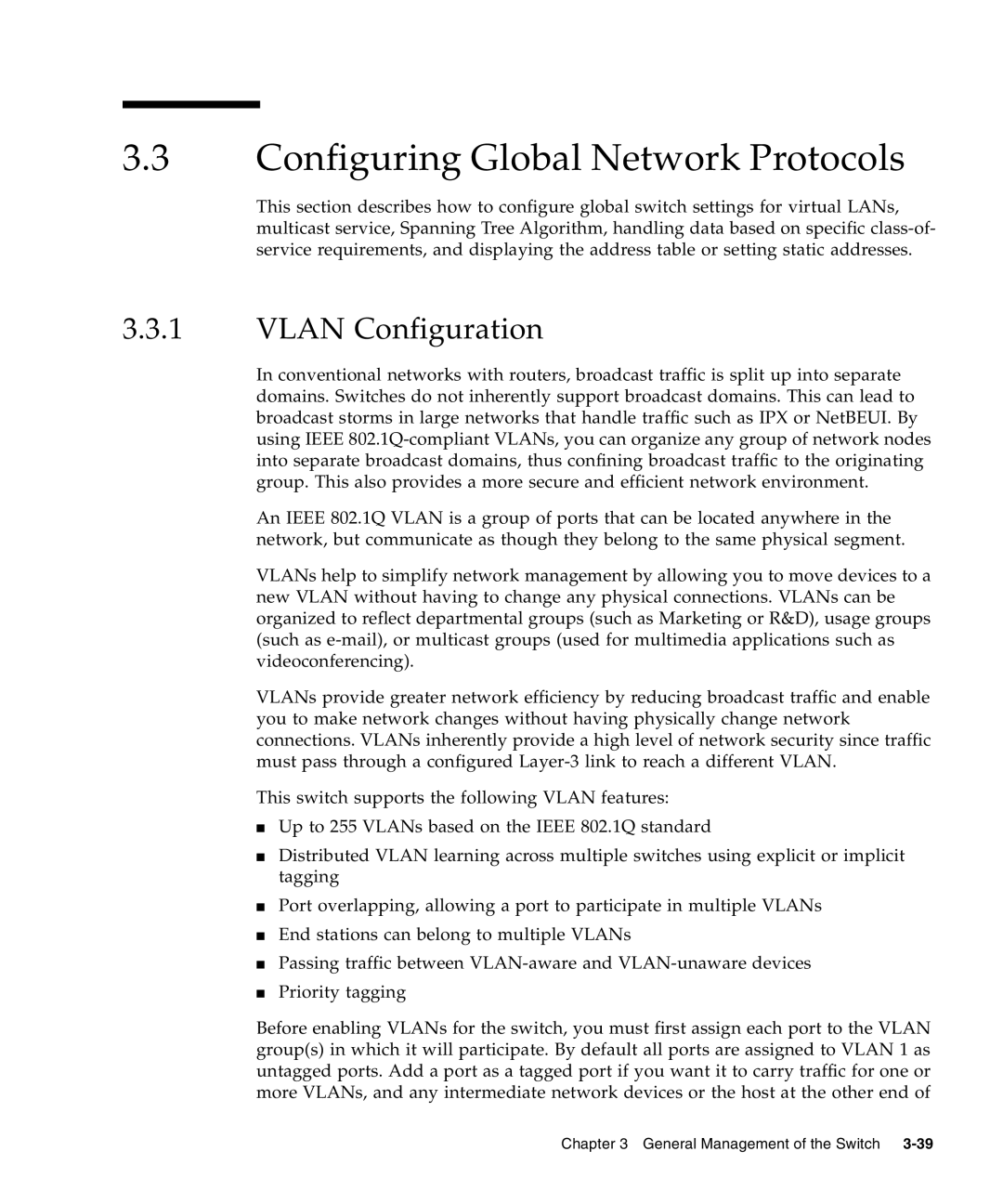3.3Configuring Global Network Protocols
This section describes how to configure global switch settings for virtual LANs, multicast service, Spanning Tree Algorithm, handling data based on specific
3.3.1VLAN Configuration
In conventional networks with routers, broadcast traffic is split up into separate domains. Switches do not inherently support broadcast domains. This can lead to broadcast storms in large networks that handle traffic such as IPX or NetBEUI. By using IEEE
An IEEE 802.1Q VLAN is a group of ports that can be located anywhere in the network, but communicate as though they belong to the same physical segment.
VLANs help to simplify network management by allowing you to move devices to a new VLAN without having to change any physical connections. VLANs can be organized to reflect departmental groups (such as Marketing or R&D), usage groups (such as
VLANs provide greater network efficiency by reducing broadcast traffic and enable you to make network changes without having physically change network connections. VLANs inherently provide a high level of network security since traffic must pass through a configured
This switch supports the following VLAN features:
■Up to 255 VLANs based on the IEEE 802.1Q standard
■Distributed VLAN learning across multiple switches using explicit or implicit tagging
■Port overlapping, allowing a port to participate in multiple VLANs
■End stations can belong to multiple VLANs
■Passing traffic between
■Priority tagging
Before enabling VLANs for the switch, you must first assign each port to the VLAN group(s) in which it will participate. By default all ports are assigned to VLAN 1 as untagged ports. Add a port as a tagged port if you want it to carry traffic for one or more VLANs, and any intermediate network devices or the host at the other end of
Chapter 3 General Management of the Switch
